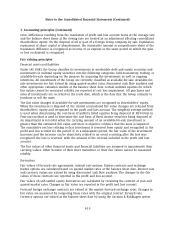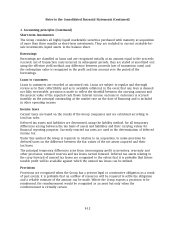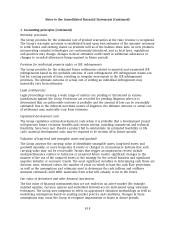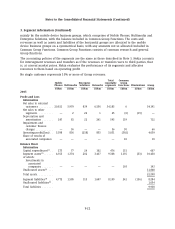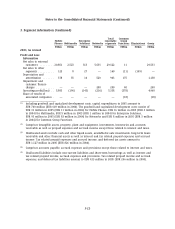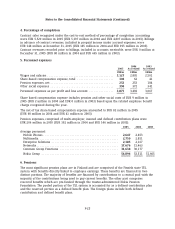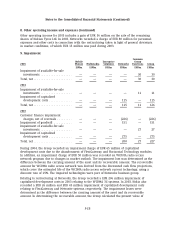Nokia 2005 Annual Report Download - page 157
Download and view the complete annual report
Please find page 157 of the 2005 Nokia annual report below. You can navigate through the pages in the report by either clicking on the pages listed below, or by using the keyword search tool below to find specific information within the annual report.Notes to the Consolidated Financial Statements (Continued)
1. Accounting principles (Continued)
Deferred taxes
Management judgment is required in determining provisions for income taxes, deferred tax assets
and liabilities and the extent to which deferred tax assets can be recognized. If the final outcome
of these matters differs from the amounts initially recorded, differences will impact the income
tax and deferred tax provisions in the period in which such determination is made.
Pensions
The determination of pension benefit obligation and expense for defined benefit pension plans is
dependent on the selection of certain assumptions used by actuaries in calculating such amounts.
Those assumptions include, among others, the discount rate, expected long-term rate of return on
plan assets and annual rate of increase in future compensation levels. A portion of plan assets is
invested in equity securities which are subject to equity market volatility. Changes in assumptions
may materially affect the pension obligation and future expense.
Share-based compensation
The Group has various types of equity settled share-based compensation schemes for employees.
Fair value of stock options is based on certain assumptions, including, among others, expected
volatility and expected life of the options. Non-market vesting conditions attached to performance
shares are included in assumptions about the number of shares that the employee will ultimately
receive relating to projections of sales and earnings per share. Significant differences in equity
market performance, employee option activity and the Group’s projected and actual sales and
earnings per share performance, may materially affect future expense.
New IFRS standards and revised IAS standards
In August 2005, the IASB issued IFRS 7, Financial Instruments: Disclosures, which will supersede all
disclosure requirements addressed earlier in IAS 32, Financial Instruments: Recognition and
Measurement, and includes a comprehensive set of qualitative and quantitative disclosures on risk
exposures from all financial instruments. IFRS 7 is effective for fiscal years beginning on or after
January 1, 2007. The Group does not expect the adoption of this standard to have a material
impact on the disclosures as it has also in the past disclosed qualitative and quantitative
information on risk exposures.
In December 2004, the IASB issued Amendment to IAS 19 Employee Benefits—Actuarial Gains and
Losses, Group Plans and Disclosures, which introduces the option of an alternative recognition
approach for actuarial gains and losses. It also adds new disclosure requirements. As the Group
does not intend to change the accounting policy adopted for recognition of actuarial gains and
losses, adoption of this amendment will only impact the format and extent of disclosures
presented in the accounts. The Group will apply this amendment from annual periods beginning
January 1, 2006.
F-19



